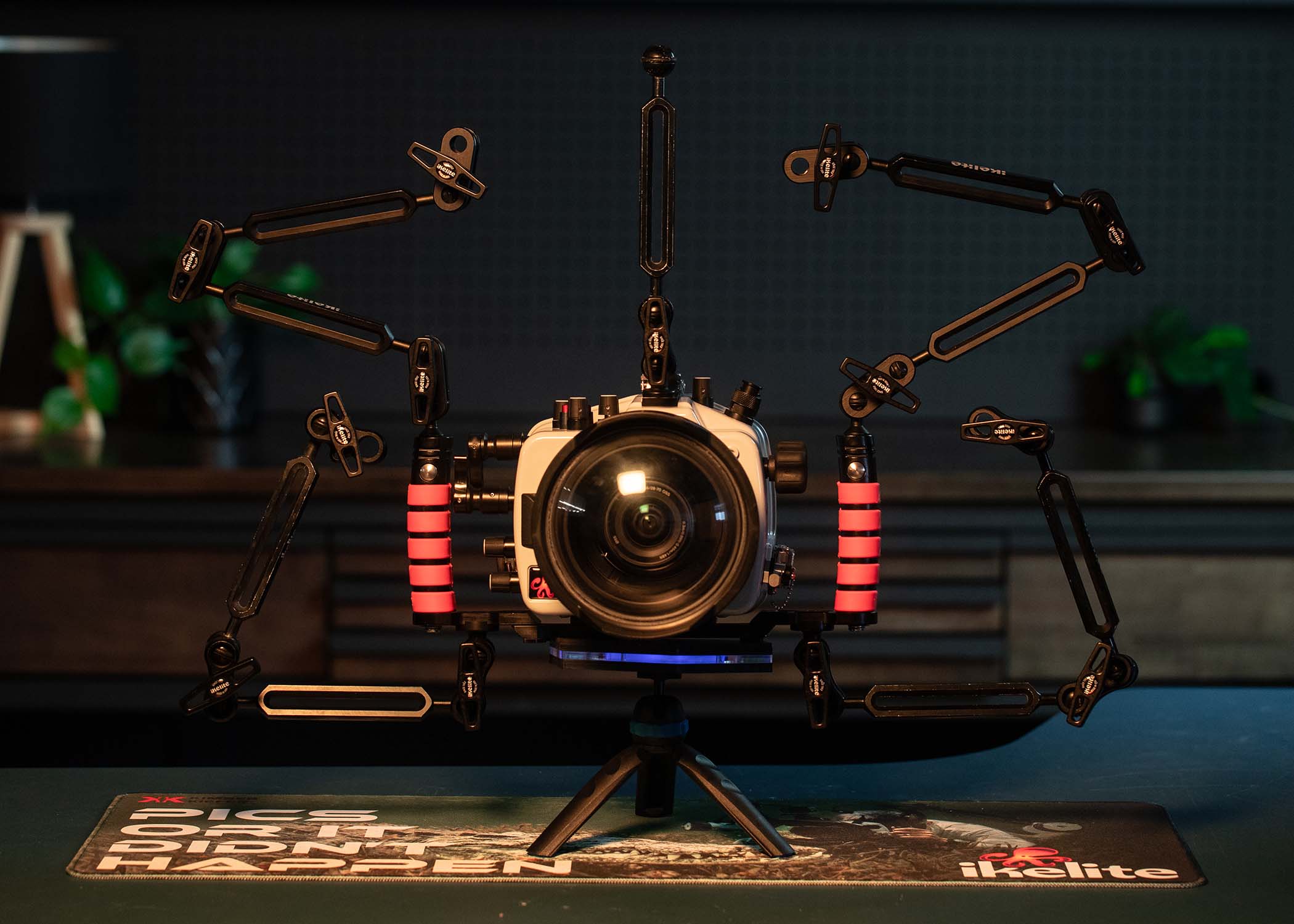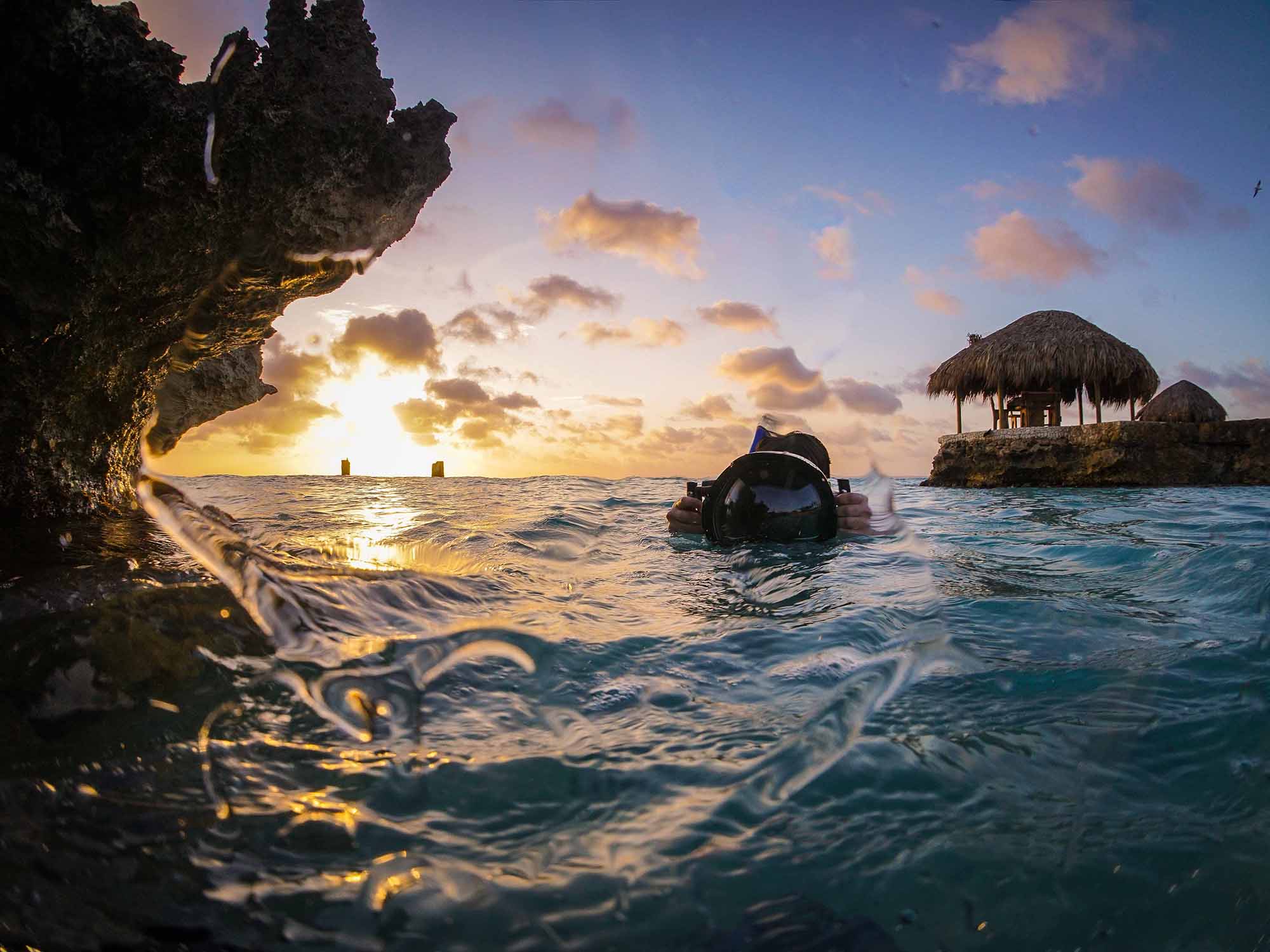By Jean Rydberg
I find that a lot of shooters are confused about the difference between shooting manual exposure on a camera and shooting manual exposure on strobes. These are two different but related things and it’s important to understand how they relate. I’m going to explain what these variables are, how to balance them, and also debunk some common myths about strobe exposure. Let’s dive into it.
Camera vs. Strobe Exposure
When we talk about camera exposure we are referring to your aperture, shutter speed, and ISO settings. These settings affect how much light your camera captures when you take a photo. When you change a setting, everything in the photo looks brighter or darker.
When we talk about strobe exposure we are talking about the power of the strobe. Strobe exposure settings will primarily affect the brightness of the subject.
Why We Use Strobes Underwater
Keep in mind that underwater we use flash even when we have enough light on our subject.
Sunlight contains all of the colors of the rainbow. But by the time sunlight passes through about 30 feet of water, only blue and green light hits your subject. We need to literally shine a light on our subject if we want to photograph the reds, oranges, and purples in the underwater world.

Interested in learning more about color loss underwater? Check out our in-depth article Why You Need Strobes Underwater for a crash course on underwater lighting.
How to Balance Camera Exposure and Strobe Exposure
Now let’s talk about how we balance camera exposure with strobe exposure to take a great photo underwater.
Setting your camera exposure to automatic mode will usually result in photos that are slightly soft and washed out looking. You can take more dynamic photos by choosing your own aperture, shutter speed, and ISO settings. You do this in the cameras manual exposure mode.
All three settings affect the amount of light captured. Which is why we say “A stop is a stop is a stop”.
But each setting has other effects. Adjust your aperture to change how much of the frame is in focus. Adjust your shutter speed to enhance or reduce motion blur.

The most successful photographers usually memorize some go-to settings for different scenarios and know how to tweak them for better effect.
If you want to get a head start, check out the Cheat Sheets section of our website, where we provide exposure settings guidelines for a wide range of subjects and techniques. We also have a series of videos explaining each exposure setting in depth so check that out too.
Understanding Strobe Power Exposure
Camera exposure settings are a great tool for creative success underwater. When I set out to dive, I’m typically using manual exposure mode on my camera.
When we add strobes to the system, we now need to consider our strobe exposure. Remember that’s the power our strobes are set to.
The strobe power setting required for proper exposure will be directly proportional to the distance from your subject and the settings you have applied to the camera. If you’re farther away or shooting a smaller aperture, you need more power from the strobe. If you’re closer or shooting a larger aperture, you need less power.
We’re not standing on firm ground underwater. Even with perfect buoyancy we constantly move in the water column. And often our subjects are moving too – sometimes quite quickly. For the perfect shot, the power of our strobes will change every time our shooting distance or camera exposure variables change. That can be difficult to do. There is a limit to how many variables we can evaluate and act on effectively.

Even the most experienced professionals can’t change their strobe settings as fast as a turtle or shark approaches. It turns out that the camera is excellent at adjusting strobe exposure.
TTL Automatic Strobe Exposure
When you use TTL instead of manual strobe exposure, the camera measures the distance to your subject every time you take a photo and it adjusts your strobe power accordingly.
When I shoot underwater I’m using manual camera exposure combined with TTL automatic strobe exposure almost every time.
Common Myths About TTL Strobe Exposure
Now let’s quickly cover three myths about TTL strobe exposure:
Myth # 1 “I can only use TTL strobe exposure in automatic camera modes.”
That has been the case in the past but not anymore. Cameras with a flash hotshoe made in the past 5-10 years support TTL strobe exposure in their manual mode.
Myth # 2 “TTL works for macro but not wide angle.”
It actually works in both situations. In wide angle photography you have natural light coming from the sun that can confuse your camera. The answer is to make sure you’re using the correct metering mode and flash settings to ensure that the camera doesn’t under-power your flash when photographing in bright environments underwater.
Myth # 3 “TTL strobe exposure is amateur and limits your creativity.”
Some of the most published underwater photographers in the world trust TTL and rely on it to get the shot in challenging shooting conditions. Many TTL strobe systems support the use of flash exposure compensation which can be adjusted to give you the added creative control to adjust the dramatic effect of your lighting.
Flash exposure allows you to make your flash brighter or darker without limiting its ability to adjust itself as your distance to subject changes.

When shooting wide angle: make sure you’re using the correct metering mode and flash settings to ensure that the camera doesn’t under-power your flash when photographing in bright environments underwater.
Extending Strobe Power Levels with TTL
Additionally, TTL strobe metering extends the range of flash power values available way beyond the discrete values that can be selected on your strobes. There are situations where a very small amount of strobe light is required and even the lowest manual power setting on your strobe will result in a blown out photo.
Conclusion
Increasing your understanding of light is the easiest way to improve your photography. Learn how to control your camera’s exposure manually to take your photography to the next level. Consider using TTL strobe exposure combined with manual camera exposure as a tool to enhance your creativity and improve the number of great shots you come back with.
Thanks for joining me. Happy Shooting!
 Jean Rydberg, daughter of Ike Brigham, became President & CEO of Ikelite in 2006. Prior to that, she wisely pursued a degree in Astronomy & Astrophysics to prepare herself for the challenges of running a technology-driven manufacturing business with global distribution. Jean fully embraces the need to travel outside of her hometown of Indianapolis to experience good diving. She believes that any camera is capable of amazing results in the right hands, and anyone can become a great photographer given the right advice. When she's not working she's spending time with her husband, cats, and two daughters (though not necessarily in that order).
Jean Rydberg, daughter of Ike Brigham, became President & CEO of Ikelite in 2006. Prior to that, she wisely pursued a degree in Astronomy & Astrophysics to prepare herself for the challenges of running a technology-driven manufacturing business with global distribution. Jean fully embraces the need to travel outside of her hometown of Indianapolis to experience good diving. She believes that any camera is capable of amazing results in the right hands, and anyone can become a great photographer given the right advice. When she's not working she's spending time with her husband, cats, and two daughters (though not necessarily in that order).
Additional Reading
Why You Need Strobes Underwater
Underwater Exposure Explained | Aperture Settings [VIDEO]
Underwater Exposure Explained | Shutter Speed Settings [VIDEO]
TTL Underwater Strobes for Canon R10 (and R7) // Setting It Up [VIDEO]











![Manual Camera Exposure VS Manual Strobe Exposure for Underwater Photography [VIDEO]](http://www.ikelite.com/cdn/shop/articles/Manual_Exposure_Blog_Cover.jpg?v=1694783175&width=1500)

